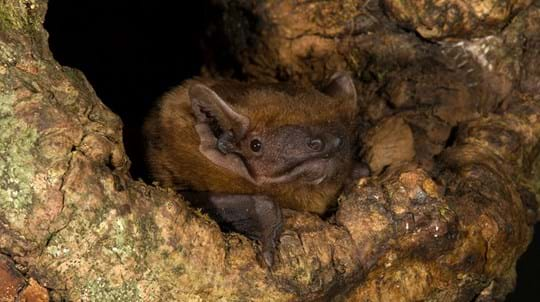
Credit: Eric Medard / naturepl.com
What do barbastelle bats eat?
Barbastelle bats enjoy a diet of moths, midges and beetles, which they hunt at night using echolocation. They hunt in a variety of habitats, particularly over water, and have a quick and skilful flight.









